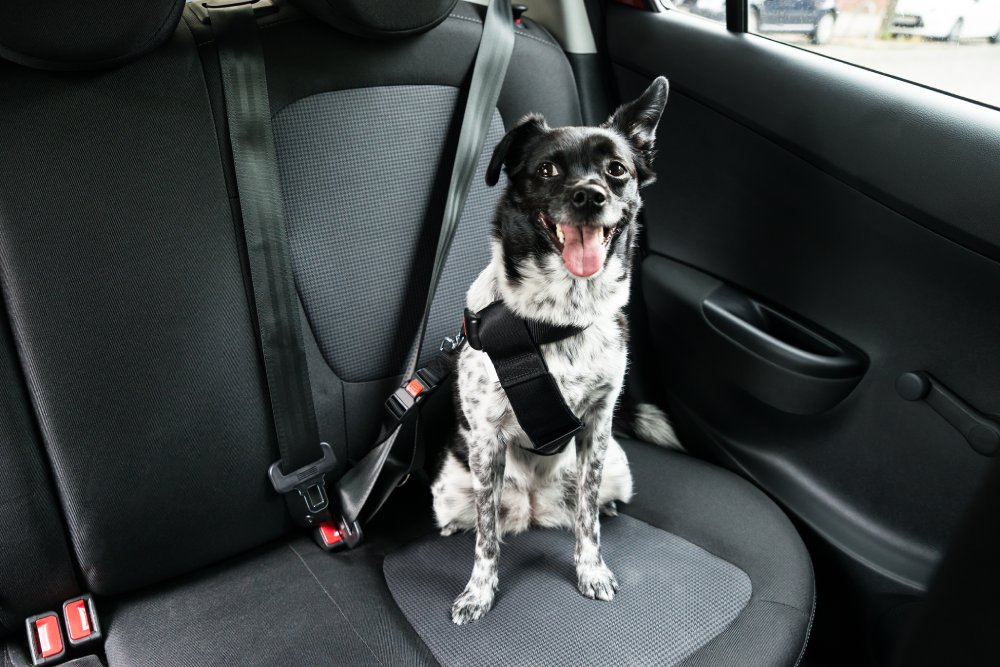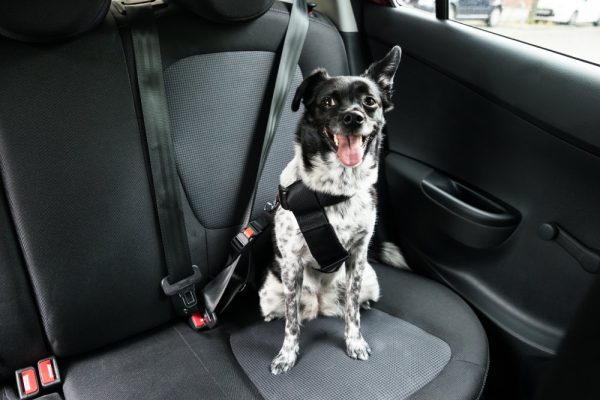Click to Skip Ahead
Cars offer a convenient method of transport for us and our dogs. But, while they are convenient, they can also be dangerous. If your dog is in the car when you have an accident, it poses a risk to the dog and also to you. If your dog doesn’t like riding in the car, their anxious behavior could cause a distraction, leading to an accident in the first place.
Dog seat belts are a form of effective restraint and help keep everybody safe. Despite this, more than 80% of drivers don’t use them or any other method of restraining and controlling their canine vehicle inhabitants.1
The 7 Tips on How to Stay Safe With a Dog in the Car:
It is possible to drive safely with a dog in the car. But it does mean restraining your pup to reduce the chances of driver distraction and potential resulting injuries in the event of a crash. If the dog rides in the back of the car, restraining them also helps protect you from injury.
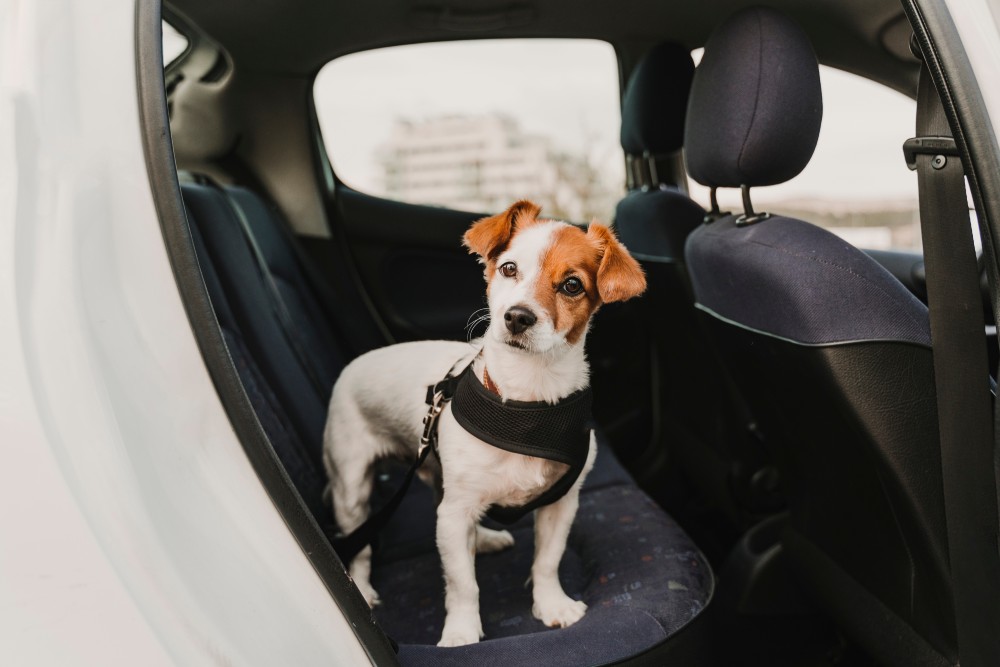
1. Get a Dog Seatbelt
There are different types and styles of dog seatbelts. Some clip to the dog’s collar and then insert into the seatbelt case. These are simple to operate, and as long as the leash section is somewhat elasticated, it should not completely restrain your dog. They will be allowed to move a bit from side to side.
Others are styled more like harnesses, so they fit around the dog and offer more constraint. However, little data exists on the use of these options at present and what direct outcomes they have on a larger scale.
2. Use a Carry Box
Small dogs can benefit from being put in a carry box or carrier. The carrier can be placed behind the front seat or belted into the seat.
Some dogs with motion sickness do better when they can see out of the window, and anxious dogs might prefer to be able to see their human, even if they can’t reach them. If you do use a carrier, make sure it is securely restrained.
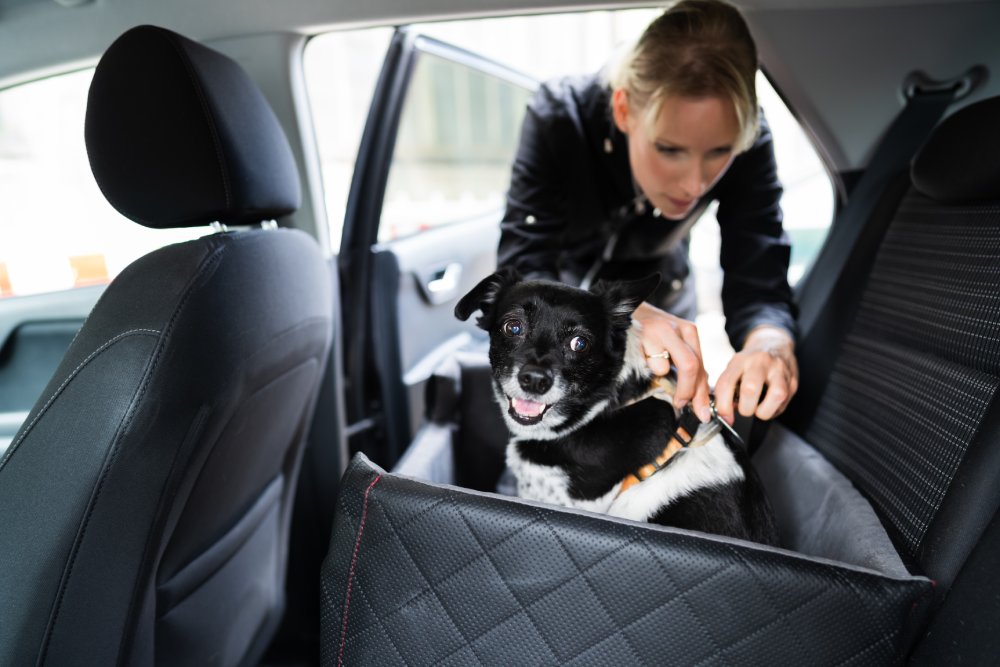
3. Use a Crate
Similarly, a crate can also house a dog and keep it out of the driver’s way while they concentrate on driving.
Ensure the crate is an appropriate size, and consider buying something that will also help prevent injuries. You can buy a harness that clips to the crate itself or through the crate and into a seatbelt holder.
4. Have a Car Companion
Some dogs get anxious when they ride in the car, and that’s why they try to get on the driver’s lap. If you rarely go on car journeys with your dog, consider having somebody to sit in the car and keep your dog calm. They can tend to your dog’s needs while you concentrate on the road, making it safer for everybody. This may not always be possible, though.
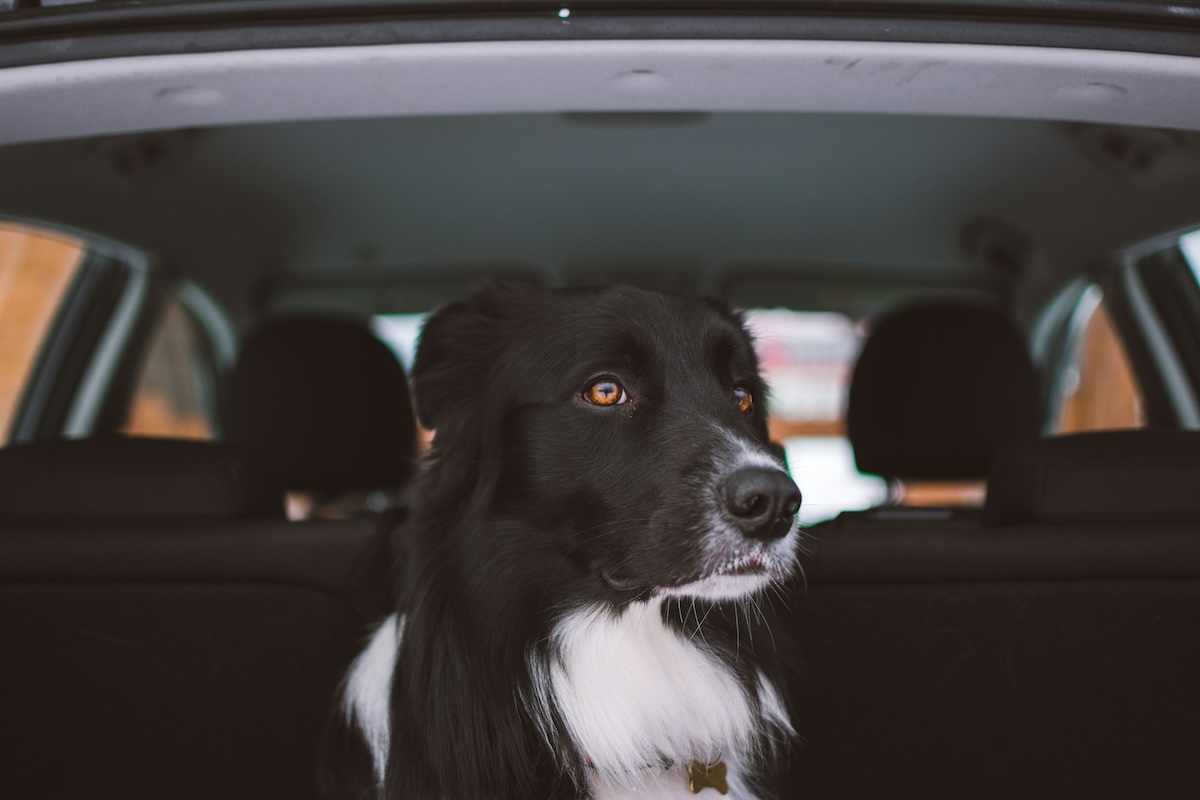
5. Stop for Toilet and Exercise Breaks
A tired dog is more likely to lie down in the car, whereas one that is full of energy and needs a pee will become listless and irritable. Let your dog do its business before you get in the car, and make sure it is well exercised.
During the journey, take regular breaks and let your dog burn off a bit more energy and empty its bladder. If this is a particularly long journey, you can also give them something to eat and a drink of water.
Water is especially important during car journeys because your anxious dog will likely start panting, which causes a loss of hydration. Cars are also warm, stuffy environments that will cause your pup’s thirst levels to spike. So, while you might be tempted to limit water intake to prevent your dog from peeing in the back seat, you should avoid this temptation.
6. Build Up to Long Journeys
Car journeys are odd experiences for a lot of dogs. The car interior is warm, muggy, and has a dry atmosphere. You can open the window a crack and ensure your dog is well-hydrated during the journey, especially on longer journeys.
Before you take your dog on a 10-hour road trip across the country, start with smaller journeys. This will get them used to getting in and out of the car and teach them that there is an end to the experience.
Start by sitting in the driveway or at the front of the house with the engine on. Sit there for a few minutes before both of you get out. Repeat the process every day, or every few days, until your dog is used to how it feels to be sitting in the car. Then, start by driving around the block and back home. Do this several days before gradually increasing the journey time. It might sound like a lot of preparation, but you will both benefit.
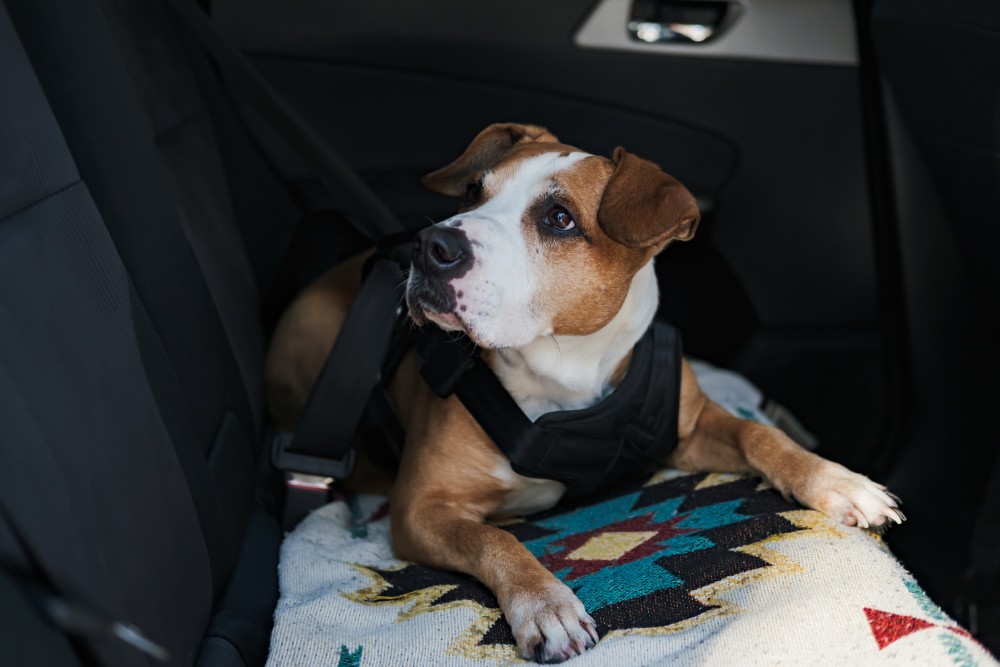
7. Don’t Feed or Fuss With Your Dog While Driving
If your dog cries, whines, and attempts to ride up front with you while you’re driving, it can be very tempting to try and calm them by stroking or petting them. Avoid giving them treats while driving, even if that is what you normally do to calm them while at home.
Even if you aren’t in an accident, if you hit a bump or hole in the road, it could cause your dog to choke on a biscuit or other tidbit of food. Wait until you’ve stopped to give a treat and ensure that your dog has eaten before you set off on a long journey.

Frequently Asked Questions (FAQ)
What Is the Law on Dog Seat Belts?
There is no federal law that requires dogs to be restrained while driving, and very few states have their own laws regulating this. Hawaii does prohibit dogs from riding on their owners’ laps. Laws and rules are subject to change, however, so it is a good idea to check your local laws before traveling. And, while it might not be a legal requirement to use a dog car seat belt or other restraint, it can prevent injuries and fatalities.
What Is the Best Restraint for a Dog in a Car?
The data remains too limited to definitively prove this, at present. However, some companies do perform crash-test ratings on their carriers and other restraint equipment, so pursuing this type of device supported by safety data is a good option.
Where Is the Safest Place for a Dog to Ride in the Car?
Even the safest drivers can be involved in accidents, so no matter how good a driver you are, you should consider the safest place to put your dog when driving. This is generally considered to be the back seat; however, definitive data remains to be shown. Ensure they are restrained, and take precautions to ensure they can’t distract you while driving.
Conclusion
Some of us love taking our dogs out in the car, and some dogs love to be in the car. Other dogs hate the experience. They dislike the vibration, the muggy atmosphere, and the fact they are confined to a single seat. They even dislike the fact that their human is within such a close distance but cannot get on their lap.
Not only are dogs in danger of getting injured in accidents, but they can also potentially be the cause of accidents if they get anxious and start running or jumping around the car. Dog car seat belts can help protect you and your dog while also minimizing the impact your pup has on your concentration.
Featured Image Credit: Andrey_Popov, Shutterstock

